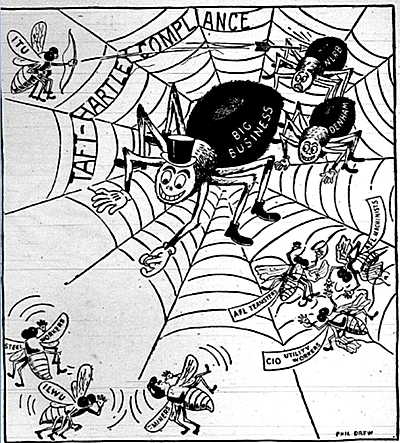
Background
In the immediate aftermath of World War II, American industry and business leaders feared the growing influence of organized labor. Unions were aggressively recruiting new members, and in 1946, more than 5 million workers in various industries walked out on jobs demanding higher pay and better benefits, bringing industries to stand-stills in concerted, effective strikes.
Because federal emergency regulations prohibited strikes in many “critical” industries during the war, labor-related agitation had been simmering below the surface for years. With veterans returning from the war, many industries were slumping as the economy retooled into a peacetime footing. Industry feared the growing power of the labor movement spearheaded by increasingly effective unions.
There was also another ambient concern about the rising efficacy of unions in the American economy: Fear of communism as embodied in the growing postwar menace presented by the Soviet Union. In this heated environment at the dawn of the Cold War, Republicans had gained control of the House of Representatives and Senate for the first time since 1931 with a platform to unshackle business and industry from the labor-friendly controls imposed by the Democrats under President Franklin D. Roosevelt during the Depression and World War II.
It was in this atmosphere that The Labor Management Relations Act of 1947 was sponsored by U.S. Sen. Robert A. Taft (R-Ohio) and Rep. Fred A. Hartley (R-New Jersey) and adopted, eventually becoming more popularly known as The Taft-Hartley Act – one of more than 250 union-related bills introduced into both houses of Congress in 1947.
Key Question
Was the Taft Hartley Act a good bill?